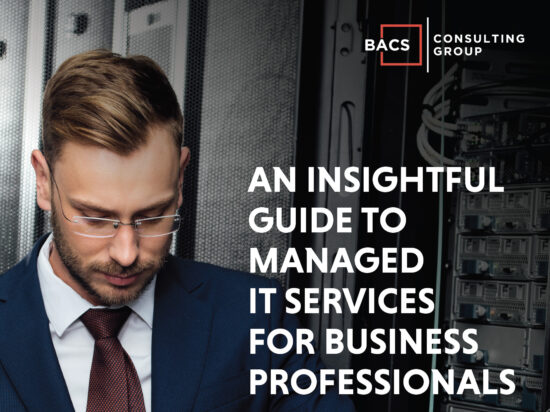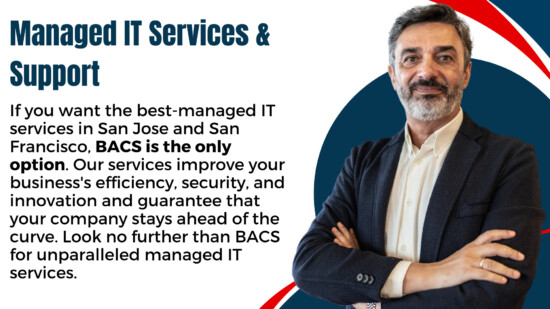Imagine an employee knocks on your office door to talk about a theft they uncovered. In a grave voice, they tell you that tens of thousands of dollars had been siphoned away from your firm without anyone realizing it. What would your reaction be?
Unfortunately, this situation is already occurring in companies around the world. The inadequate handling of IT services and support unintentionally removes tens of thousands of dollars from companies without anyone knowing about it. In addition to losing money in the short term, these companies expose themselves to losses that could add to seven figures.
As a business owner, you naturally want to minimize losses and run a profitable business. You must protect your company from potential issues. A tremendous potential problem is IT. If your IT department is not doing its job, you could be unknowingly exposing your business to cybersecurity risks and the losses they incur.
How Your Company Is Losing Money
If you are losing money, you need to know about it. More importantly, you have to find a way to stop these losses from occurring. Through data compliance and similar measures, you can protect your business.
Maverick Spending and Poor Planning Could Be Costing You Money
In audits, there is one loss that stands out across different industries and companies. Inefficiencies from poor planning mean that IT systems are full of redundant resources. Often, different IT approaches do not mesh perfectly together. Because of this, companies have to deal with reduced productivity if they are using a patchwork of IT systems.
Maverick spending happens when employees make purchases outside of the standard chain of command. These types of expenditures create redundancies and cost the company more money. Maverick spending is about more than just the initial cost. Different technologies implemented haphazardly tend to overlap poorly. In addition to duplications, the overall system also has gaps.
Worse still, your entire IT system is unprotected. If an employee buys a random program on their own, only the employee is aware of it. Regular updates do not happen, which places your entire network at risk. Preventing this kind of problem from happening involves putting controls in place and making every employee use an e-procurement platform. By streamlining your procurement process, you get more oversight over what employees are buying and using.
2. You Need Better Data and Computer Security
If a hacker breaks into your network, the devastation can be tremendous. Immediately after the attack, your company suffers from productivity losses. You may have to shut down temporarily and delay some of your transactions. Also, you may need to divert your resources to stop the attack.
Over time, you could lose customers because of the attack. If your clients do not feel confident about the security of their financial information, they may go to a different company. As a result, you can quickly lose millions of dollars because of an attack. Once these accounts are gone, you may never get them back.
After a disaster, you have to deal with the damage to your reputation and the loss of essential data. You might have to deal with lawsuits if your company was negligent. Besides, you may have to pay government fines. All of these issues will distract from your company’s primary operations. Until you have resolved all of these problems, your company’s growth will be side-tracked.
Unfortunately, many companies are setting themselves up for failure. Because they do not have good cybersecurity, they could be the subject of a ransomware attack. Many executives think that they are protected because they spend significant amounts of money on their IT departments and technological resources. In reality, these expenditures can be a complete waste if the company does not use the right data compliance measures.
3. Companies Need to Update Their IT Budgets
Before you reuse last year’s budget, you need to conduct an audit of it. Many companies err by using the same budget each year. Most IT departments go through different cycles of spending from one year to the next. Even if you primarily use cloud computing, you will still need to make periodic investments in your infrastructure. Otherwise, you could run out of capacity.
To avoid budgeting issues, you need to create an IT roadmap that includes your capital investments. Talk to your IT department and vendors about your expected expenses for the upcoming year. Then, you can update your budget with accuracy.
4. Chronic Downtime Can Cost Your Company
Your IT problems are probably costing your company money. Distracted workers directly impact your organization’s profitability and labor costs. They can also lead to even higher expenditures by making mistakes and performing subpar work. As a result, distracted workers can make your company miss deadlines. Fellow team members end up having low morale because they have to deal with missed deadlines and mistakes because of tech-related problems.
Unfortunately, many executives are unaware of how big this issue is. While workers cause some employee-related problems, distractions can also happen because of IT mishaps. These IT failures occur regularly in many workplaces, leading to chronic issues.
IT failures distract workers from helping clients and doing their job. Each time an IT problem occurs, the worker has to stop what they are doing, call the IT department, and wait for the technician to fix the problem. Over a year, you can lose hundreds of labor hours. If you have a lot of employees, these costs can quickly add up.
Smart Companies Make a Disaster Recovery (DR) Plan
A range of disasters could harm your company. Viruses, malware attacks, accidental data loss, system failures, and natural disasters could lead to thousands or millions of dollars in damage. If you do not have a Disaster Recovery plan, a disaster and its aftermath could completely cripple your business.
Small business or a global conglomerate, your company needs a contingency plan and backup systems. Techniques like remote services and the cloud can help you achieve business continuity after a disaster. With scalable solutions, your Disaster Recovery plan can help you move forward without interruptions after a disaster occurs.
An IT Assessment Can Solve Your Problems
With an IT assessment, you can review your cybersecurity risks and make your IT department more efficient. This assessment can occur remotely with or without the knowledge of your IT department. Afterward, you can learn more about whether your IT department is doing its job.
You can discover some of the following information through an assessment.
- You can analyze if you’re protecting your data and systems from ransomware, viruses, and hackers.
- You can discover whether you have the right data compliance measures in place.
- You can make sure your company is meeting federal, state, and industry regulations regarding data protection.
- You can find out if you’re backing up your data in a safe manner so you can recover quickly after a ransomware attack or a natural disaster.
- You can learn about ways you can boost your productivity, increase your security, and boost your company’s communication.
- Additionally, you can find new ways to reduce your IT costs.
By getting an IT assessment, you can gain fresh insight into your organization. You can see if your company is using your IT department and resources efficiently. Through a comprehensive evaluation, your company could save thousands of dollars each year on IT costs.







